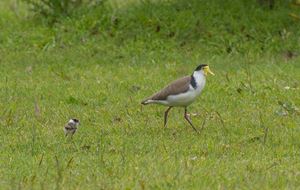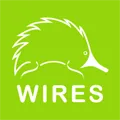Blog
Contact media@wires.org.au for enquiries or call 0416 272 153.
For the latest updates on bushfire recovery projects and emergency response
Read WIRES Emergency Recovery Plan and WIRES National Emergency Response Plan
Give Plovers a little love and understanding
 Plover
breeding season has started and our rescue line is receiving many calls
from members of the community asking for swooping plovers to be
relocated. Attempts
have been made in the past to relocate the eggs and nests to a more
suitable location - the parent birds rarely follow, resulting in
abandonment. Relocation or removal of native eggs/nests requires a NPWS
permit.
Plover
breeding season has started and our rescue line is receiving many calls
from members of the community asking for swooping plovers to be
relocated. Attempts
have been made in the past to relocate the eggs and nests to a more
suitable location - the parent birds rarely follow, resulting in
abandonment. Relocation or removal of native eggs/nests requires a NPWS
permit.
Plovers usually lay their eggs after local rains. They lay up to four eggs on the ground in a small depression in open areas so they can see their predators. However, these birds have now come to accept flat roofs as a suitable nesting site, as they are generally safe from humans and predation.
The eggs will hatch in about 28 days. Plovers have spurs on their wings however despite common belief, these are not poisonous.
What you can do
- It is important to remember that plover aggression only occurs for a short period of time. Once the chicks have hatched, the level of attacks will significantly decrease.
- If you have plovers swooping in your area, try to avoid the nesting area and do not antagonise the birds.
- If you cannot avoid the area, try not to walk directly towards the birds or make eye contact with them. Wearing a large hat or bike helmet when in their vicinity can also help.
- If the nest site is simply in a vulnerable position, a protective fence/table/chair can be placed over the nest site so that the birds can come and go safely until the chicks are hatched.
- Adults are very protective of their chicks and will dive on intruders, use loud noises and swooping or act as though they have a broken wing in an attempt to lure the intruder away from the nest. This behaviour is mostly bluff and actual contact attacks are rare.
Leaving the nest
Unlike many other dependent bird chicks, Masked Lapwing chicks have a full covering of down and are able to leave the nest and feed themselves a few hours after hatching. Parents provide protection, direction and warmth. In urban environments plovers may lay their eggs on roof tops for safety. In most cases, the chicks will be able to jump down safely from the roof. This is a natural process undertaken by many bird species, including some ducks who nest in tree hollows, and the chicks are remarkably resilient to the long fall but may require assistance if the distance is too great.
In some circumstances, the chicks may not be able to jump and may require assistance to reach the ground. However, interference with chicks should only occur on an absolute necessity basis. It is possible to reunite chicks with their parents at ground level in these situations, call WIRES 1300 094 737 for advice.
Search
Newsletter
Stay in touch and get our regular rescue stories, WIRES updates and a free copy of our 15 Ways to Help Wildlife ebook
Recent Posts
- Emergency Response Training for Wildlife Volunteers
- WIRES Introduces New Wildlife Rehabilitation Governance Courses in Collaboration with NPWS
- Community Support for Post-Bushfire Recovery of Wildlife in the Greater Blue Mountains
- Research Grants Program-2023 Recipients Announced
- National Koala Conference
- Nature Conservation Council's Bushfire Conference
- Support Stronger Nature Laws
- Helping Endangered Cockatoos: WIRES Grant Success Story
- Landmark Conservation Project Ensures The Future of The Northern Bettong
- Wildlife Road Collisions Unveiled
